9 Roman Cities in Spain for Fascinating Time Traveling
October 10, 2022
Win a FREE Trip to Spain!
Exciting Announcement! For the first time, we're thrilled to offer exclusive trips to the heart of Spain - an experience like no other. This isn't your typical tourist journey; it's a unique opportunity to immerse yourself in authentic Spanish culture, alongside real locals and our passionate team.
But there's more! Simply by requesting information about this amazing trip, you'll be entered into a special draw to win a Fully Paid Trip to Spain for Two. And that's not all - everyone who inquires will receive an exclusive bonus gift, valued at $500, available only now.
Ready to Discover the Real Spain?Click Here ↑ to Request Information & Enter the Draw!
Have you ever had to choose between two amazing things? For example, someone asks you to choose between Italian pizza and pasta. You can have only one; which one would it be?
Both are amazing! The same thing happens when you have to choose between one country or another when you travel.
But today, I will give a different reason for coming to Spain: Roman cities. Yes, if you want a trip with a bit of everything, history, food, beaches, nightlife, etc. This is your country. And if you are a history geek like I am, these 9 roman cities will grant you a journey back in time
So, pay attention and write down which one you want to see first!
Table of Contents ▼ ▶
1. Merida
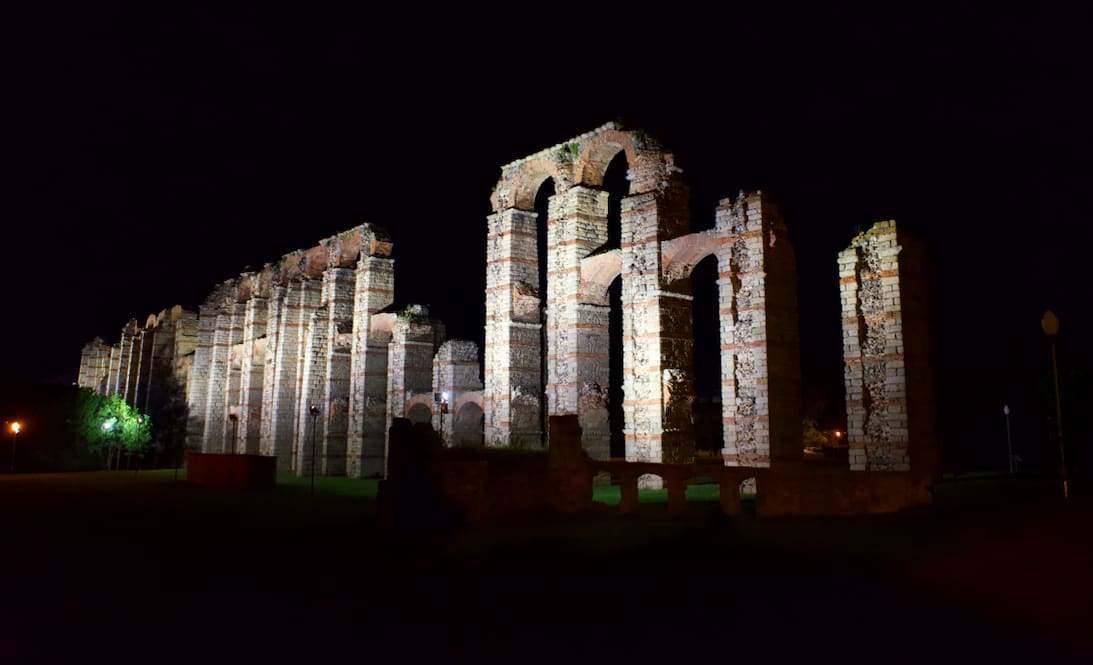
Merida is the capital of the autonomous region of Extremadura in western Spain, right next to Portugal- actually, it’s only two hours away by car!
This is Spain’s most extensive archeological ensemble, with more than 20 components or Roman ruins that can leave you breathless. It is so important that UNESCO named it Wolrd heritage in 1993. Okay, maybe this will only happen with history geeks like me. But walking through the city and encountering pieces of history with more than two thousand years has to touch a nerve!
The Romans knew Merida as Augustus Emerita, founded by Emperor Octavian in 25 BCE. The city was the capital of the province of Lusitania, and it was built for two legions of soldiers who retired with honor.
What to see in Merida?
- The Roman theatre
- The amphitheater
- The circus
- The Roman bridge
- The Temple of Diana
- Trajan’s Arch
- “Los Milagros” Aquaduct
- Roman Museum
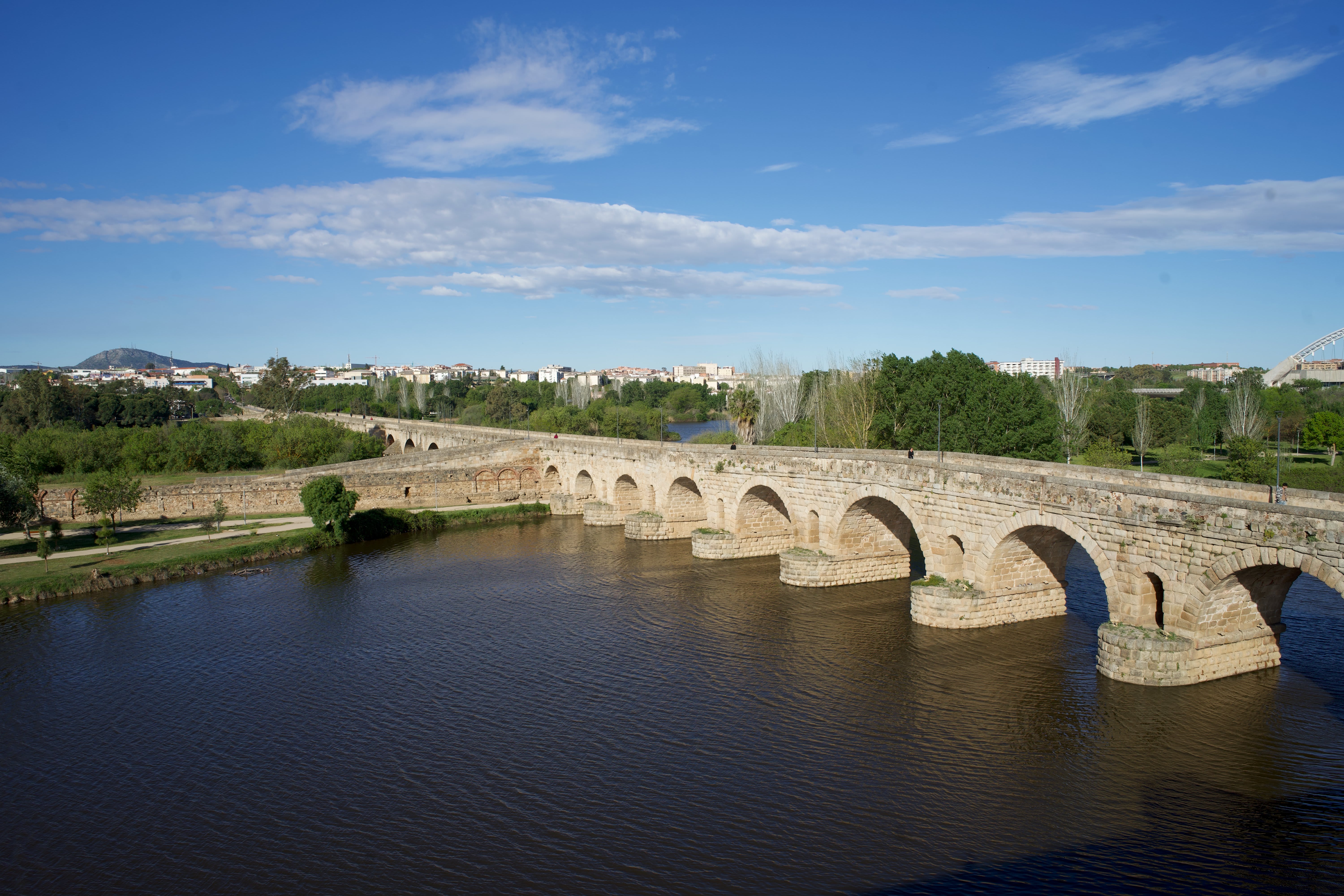
This city will take you back to Hispania, when people spoke Latin and worshiped their emperors. The list above is the eight most important archeological components to visit in Merida. The Roman Theatre, the amphitheater, and the circus are pretty close to each other. The Roman Empire built theaters and amphitheaters next to each other. In the first complex, people would enjoy plays, while in the second one, they will witness gladiatorial contests. After visiting these two, only 14 minutes away, the Roman circus is where chariots races will take place. The roman theater was built around 15 BCE and is still used today, creating an entertainment space for around 3,000 people.
The Roman bridge, the Temple of Diana, and Trajan’s Arch are the other three structures close to each other. The bridge is one of the finest pieces of engineering left by the Romans. It has 60 arches and 755 meters of extension that allow people to cross the Guadiana River. And from the bridge, only a 12-minute walk, are Trajan’s Arch and the Temple of Diana. The first was a door to a holy temple, and the second was a place of a cult dedicated to Augustus (Octavian) and other gods like Jupiter.
The Aquaduct of “Los Milagros” is another engineering masterpiece in the city’s north.
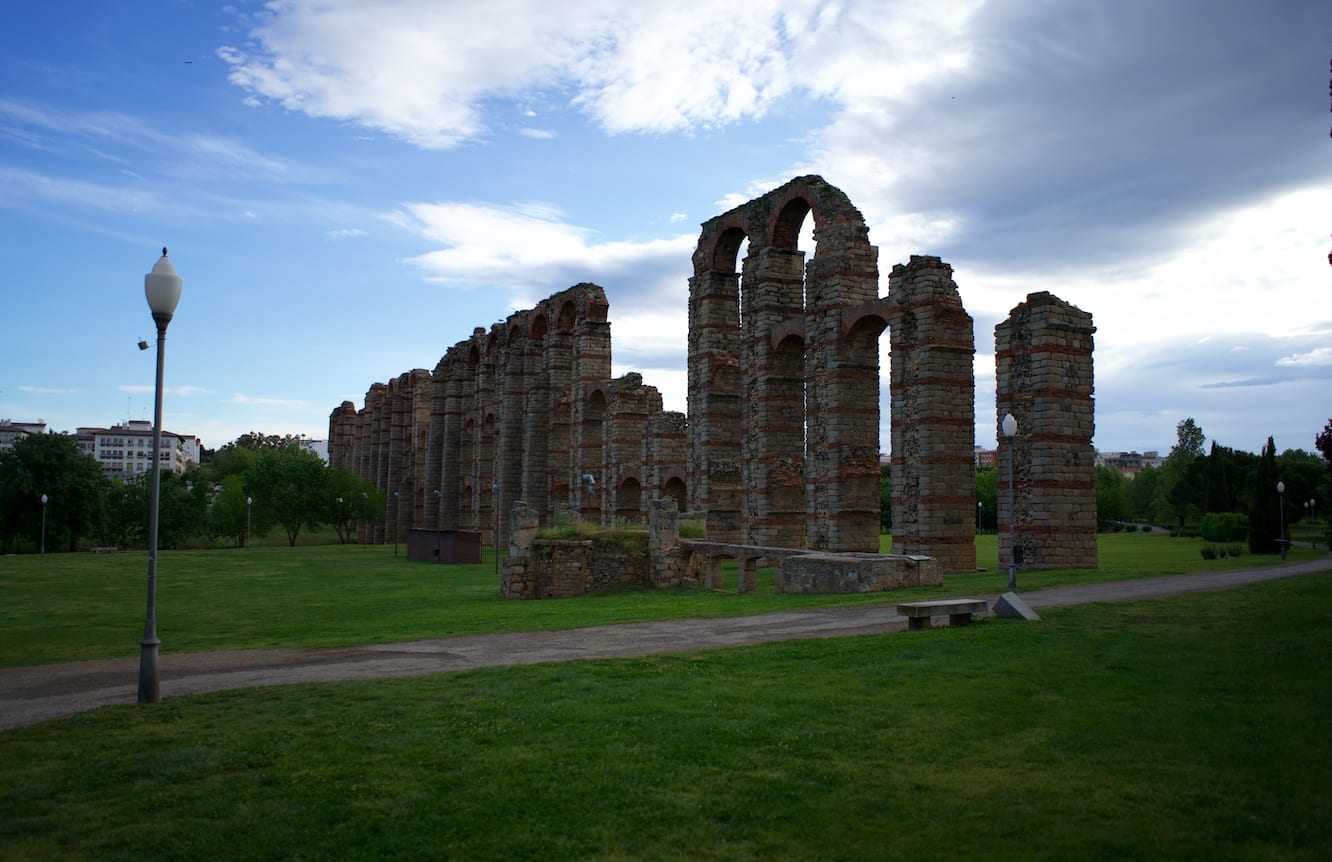
If you are really into Roman history and looking at those landmarks isn’t quite enough, you must visit the Roman Museum in the center of Merida.
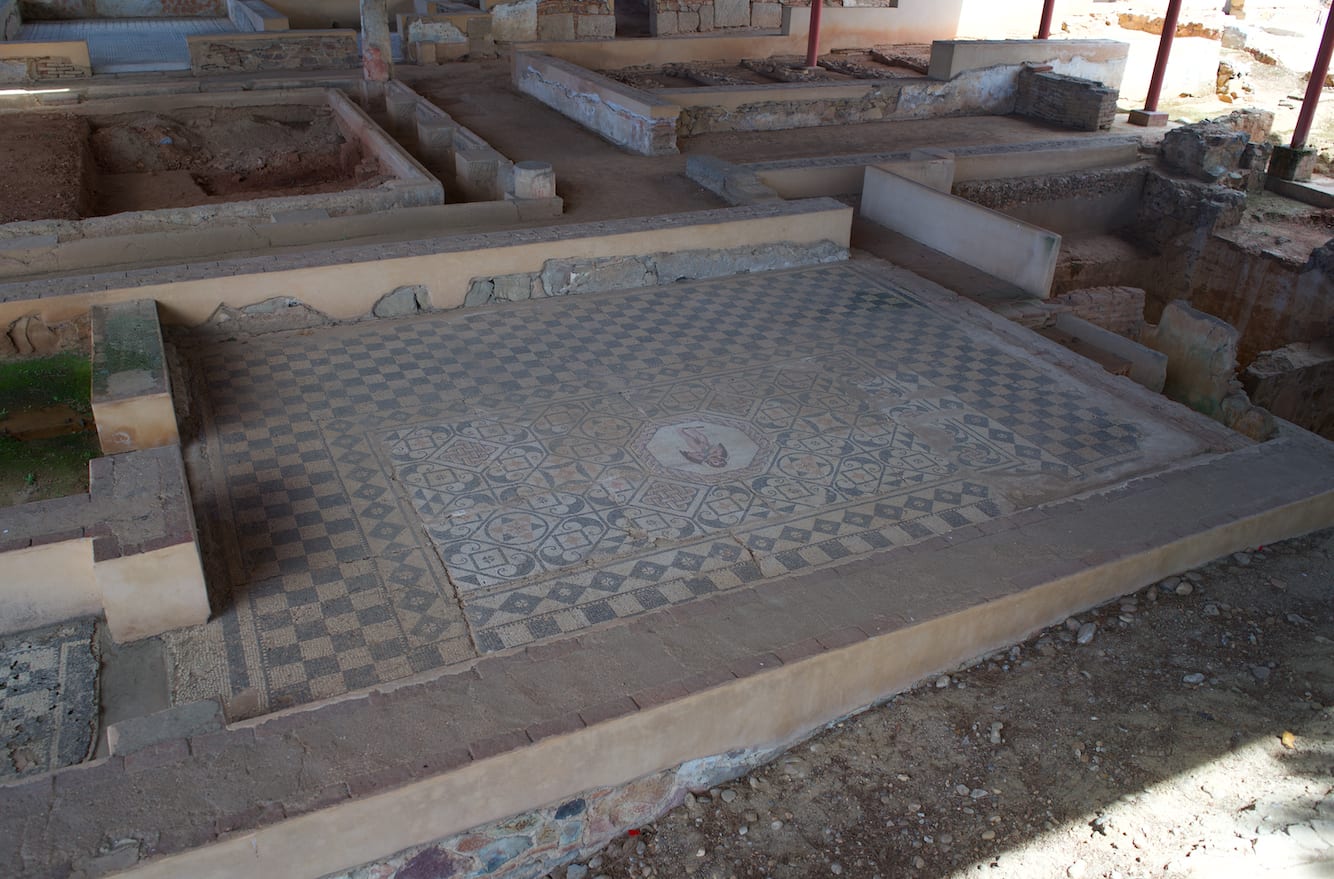
2. Tarragona

Merida is Spain’s most famous Roman city, but Tarragona is the oldest. Located 90 kilometers from Barcelona, Tarragona was founded as Tarraco in the 3rd century BCE, and it was the first city beyond the Western Empire.
Tarraco was a relevant colony in Hispania because the emperor Octavian Augustus lived there for a while.
What to see in Tarragona?
- The amphitheater
- The circus and Praetorian Tower
- Another Roman ruin
Of Tarragona’s Roman star is the amphitheater. It held around 15,000 people and was built around the 2nd BCE for gladiatorial contests. The amphitheater has a beautiful view of the Mediterranean Sea.
Only three minutes away from the amphitheater are the Circus and Praetorian Tower. Just like in Merida, de purpose of the circus was to entertain with chariot races. The circus is connected through some tunnels to the Praetorian Tower, which had no specific function in Roman Spain, but today has a beautiful view of the city.
Besides that, Tarragona has Roman ruins spread all over the city. From a Roman Forum to unique columns, you will encounter history every step of the way.
Just like Merida, this Roman city was named World Heritage in 2000.
3. Baelo Claudia
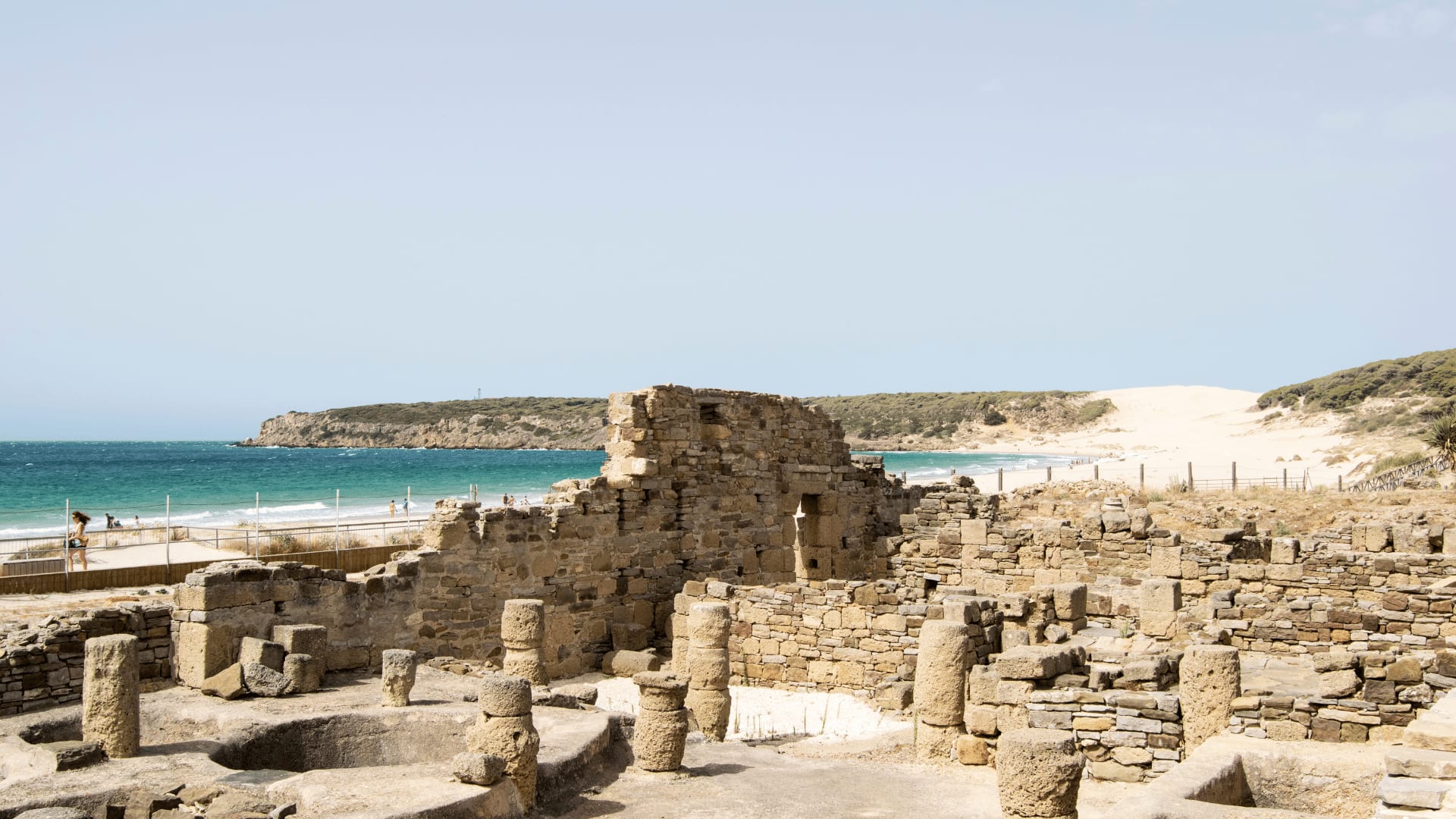
The third most impressive Roman city in Spain is Baelo Claudia, founded in the 2nd century BCE and named after Emperor Claudius, who finished its construction. To put on the map, the ruins of the Roman city are approximately 22 kilometers away from the municipality of Tarifa in Cadiz.
Unlike Merida and Tarragona, Baelo Claudia is not a modern city. No one lives there, and it is better to visit it with a guide. The complex was discovered o the 20th century, and it was in 1898 that the Andalusian government finally recognized it as an Archeological Site.
Historians have proven that Baelo Claudia’s main activity was a salting factory, which worked as an essential commercial route between Europe and Africa. This means that the city was pretty wealthy until two earthquakes and a tsunami hit it. These unfortunate natural events destroyed the city by the 4th century CE.
What to see in Baelo Claudia?
Well, as I mentioned before. If you visit, you must be with a guide and see everything. As its discovery is pretty recent, the main attractions are a temple, a forum, and a basilica, and the city’s main road shows the expertise of Roman urbanism.

4. Italica
Italica is located 10 minutes away from Sevilla in Andalusia, and it is also one of the first cities to be founded by the Romans. Historians say that Italica could have been founded around 206 BC, and it is the birthplace of Emperors Trajan and Adriano. This Roman city was recognized as an Arquelogical Complex in 1912.
What to see in Italica?
- The amphitheater or the “Dragonpit.”
- The theater
- The Walls
- The Hot Springs
- The Temple of Trajan
- The Domus
- The Houses
Sensational fact: The amphitheater in Italics was used in “Game of Thrones” as the Dragon pit in season seven.
The amphitheater in Italica could hold around 25,000 people, in the theater, the third part. The gems of this Roman city are the Bird, Neptune, and Planetary mosaics in the ruins of the houses that belonged to wealthy families.
5. Lugo
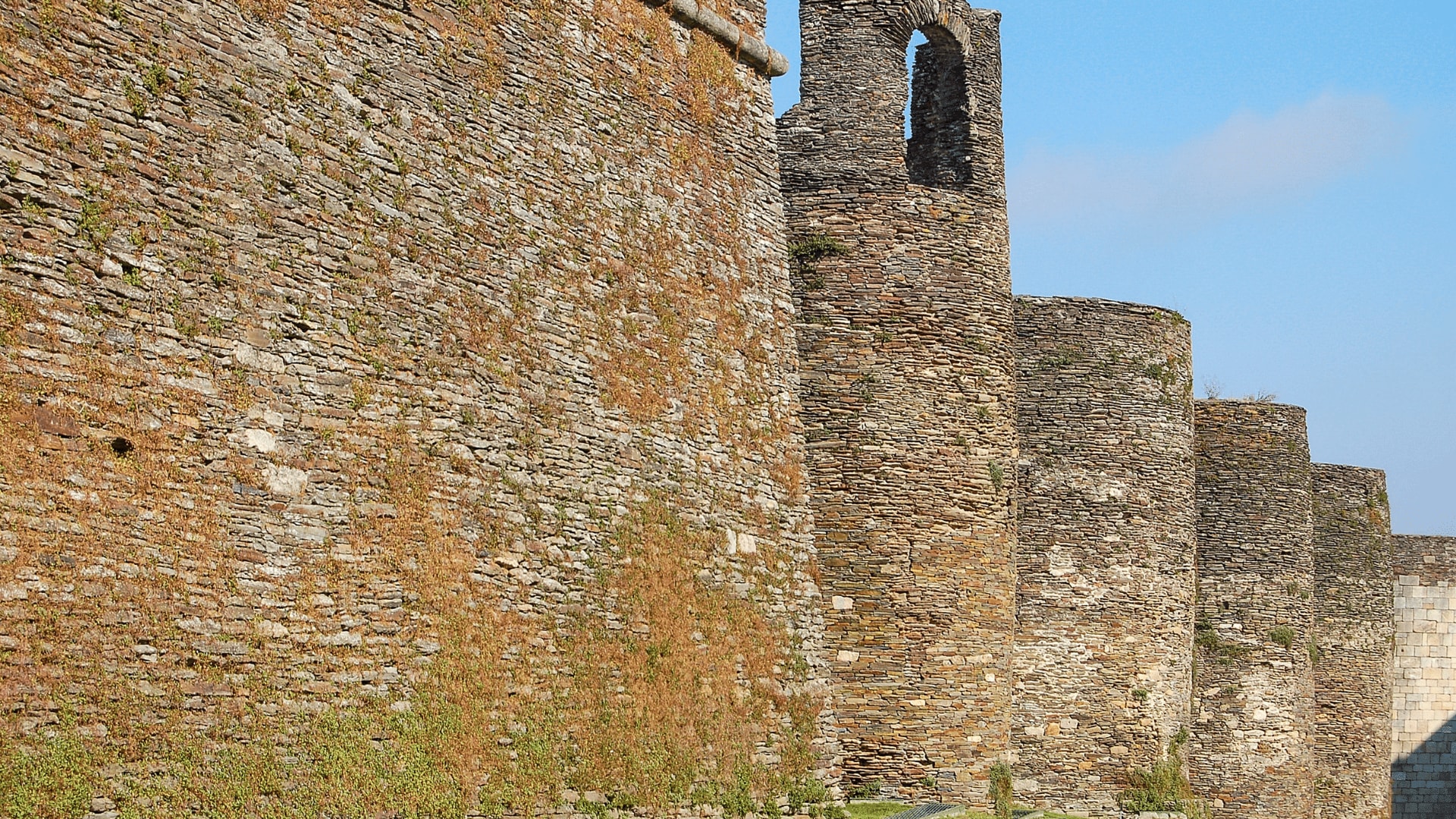
Lugo is located in the autonomous region of Galicia and is home to some breathtaking walls. The Roman Walls of Lugo were built between the 3rd and 4th century BC to protect the city of Lucus. However, other historians add that the Romans were trying to protect the “Augustus Holy Forest.”
The Roman Walls’ total length is 2117 meters, and the height varies between 8 and 10 meters. In 2000, the site was recognized as a UNESCO World Heritage.
6. Segovia
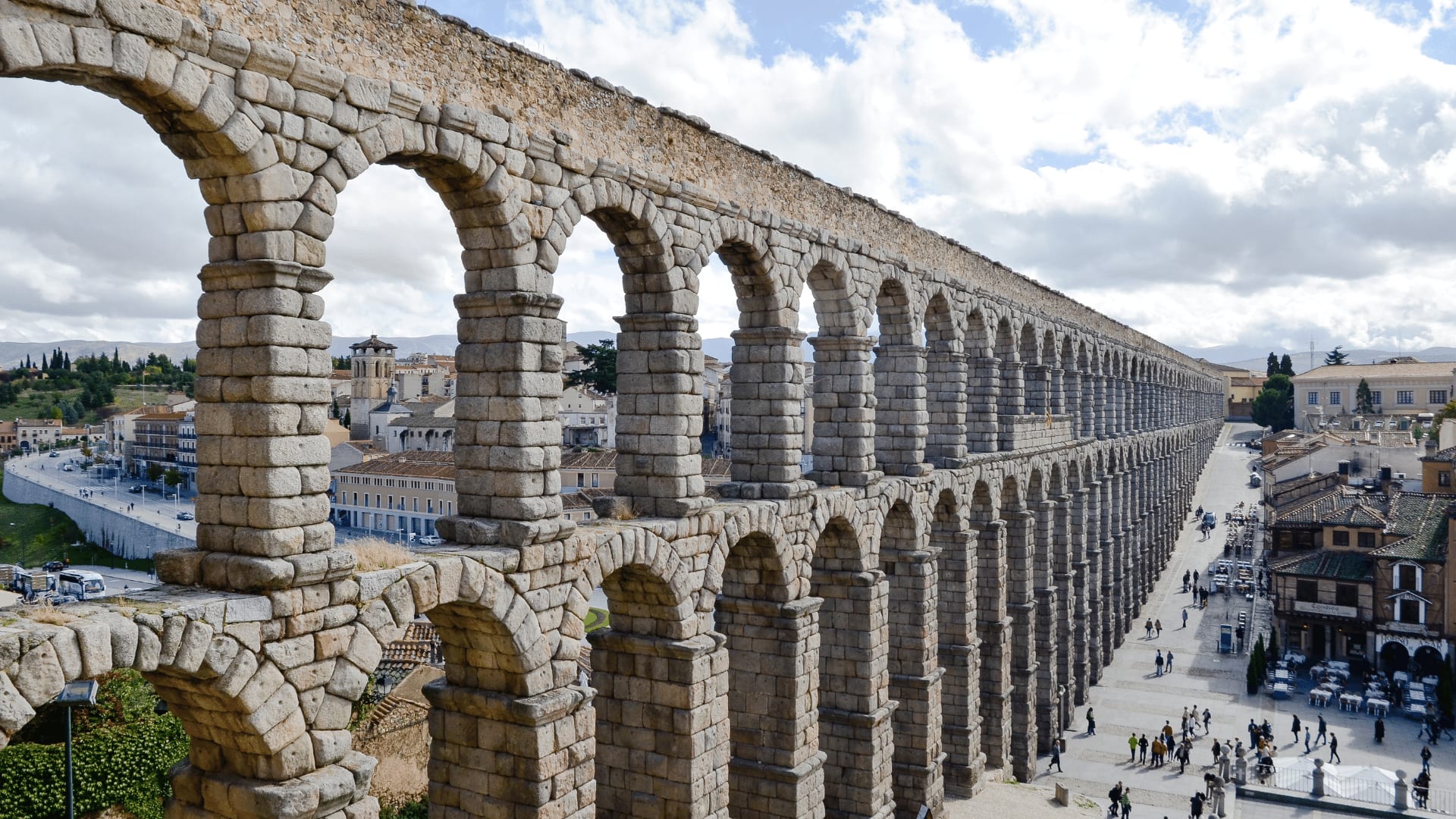
Segovia is an interesting case of a Roman city in Spain. The city is located in the autonomous region of Castille and Leon, an hour away from Madrid by train.
What to see in Segovia?
The most prominent piece of Roman engineering in Segovia is the aqueduct. It has 167 arches, is almost 30 meters tall, and is 17 kilometers long. Its main purpose was to the water from the Guadarrama Mountains to the city.
The aqueduct was built in the 2nd century BC between Emperor Trajan and Adriano’s rule. Even though that is the only visible remains of a Roman city, in 2021, the city released a proposal to continue excavations that might lead to the discovery of other ruins, such as a Forum. According to the magazine AxA “Revista de Arte y Arquitectura”, Segovia was a Roman settlement that began as a military campsite and evolved into a city with approximately 5,000 people.
7. Cartagena

Let’s clear something up. To avoid any misunderstanding, there is another Cartagena in Colombia. But, of course, we won’t be talking about that one today. Cartagena, known by the Romans as Carthage Nova, was founded by the Carthaginians under the name Qart Hadasht in 227 BCE. This civilization was in constant dispute with the Romans. Its modern location is in the autonomous region of Murcia, in the “Costa Calida” of Spain.
What to see in Cartagena?
- The Roman theater
- Roman Forum Museum
- House of Fortune
The impressive theater in Cartagena was built by Emperor Augustus. It was made at the end of the 1st century and used until the end of the 4th century CE. When the Roman Empire fell, the Byzantines, the Visigoths, the Moorish, and the Christina built and occupied the theater. It wasn’t until 1988 that the remains were found by coincidence and restored until 2008.
In the Roman Forum Museum, you’ll see selected archeological pieces that have been found during years of excavation. And, in the House of Fortune, you’ll be transported to a Roman domestic environment. Ever wondered how these great empires lived? This is your opportunity!! In the House of Fortune, you will see beautiful ancient mosaics that have been preserved and show great mythological symbolism.
8. Empuries
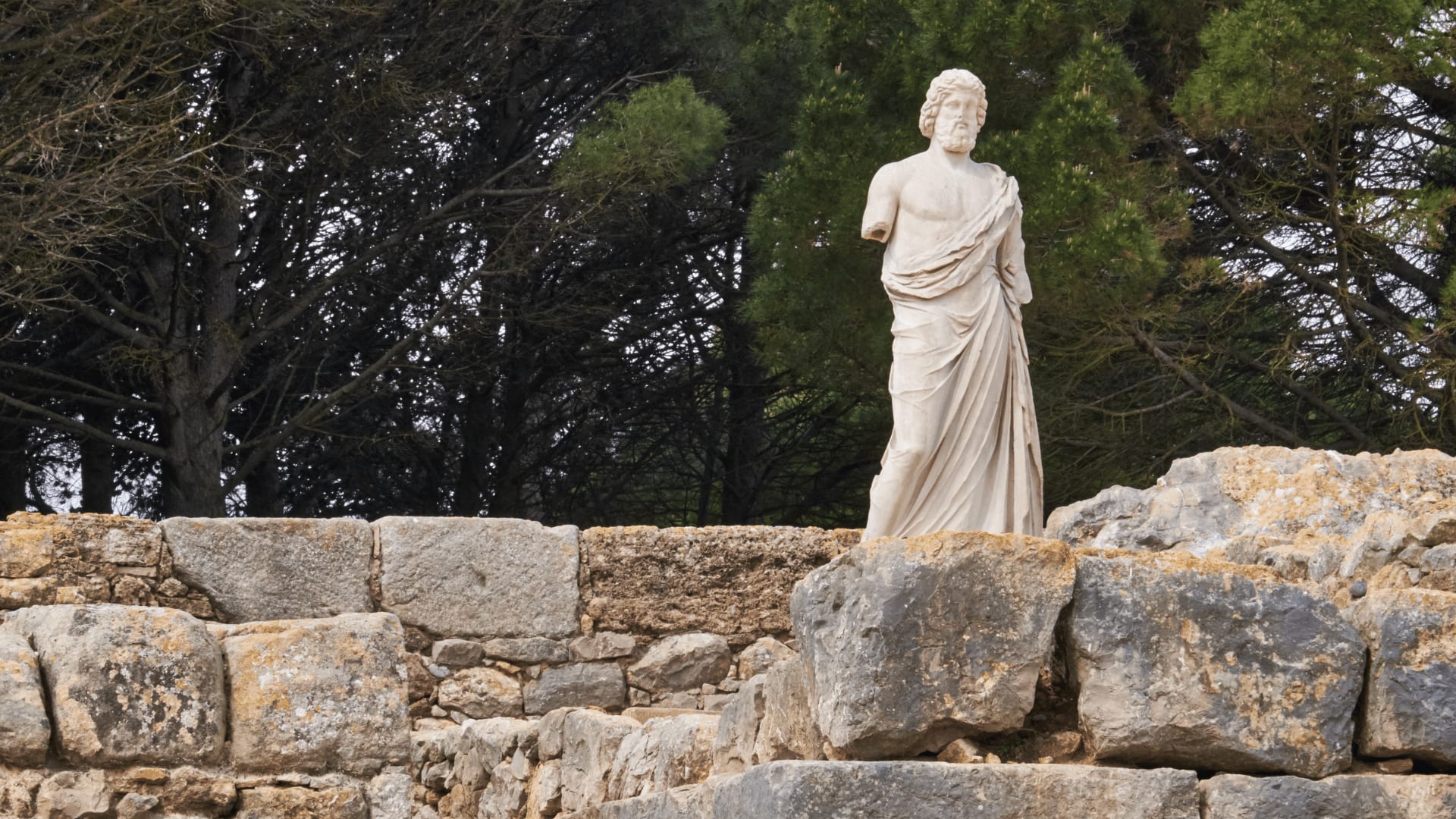
Empuries, or Ampurias as the Spanish call it, is a Greek-Roman city in Girona, Catalonia. This complex is intriguing because its the only one that preserves the encounter between two empires. This city was founded in 575 BCE by the Greeks, and it was a prosperous trade center.
The Greek city is called Palaiapolis (ancient city), and the Roman city is called Neapolis (new city). During the second Punic War between Carthage and the Roman Empire (218 BCE - 201 BCE), the Romans established allied with the Greeks and established Empuries. After the war, they created the Neapolis. And that is how Spain has got ancient Greek-Roman ruins in Catalonia!
What to see in Empuries?
Everything, of course! If you ever visit Girona or plan a trip along the “Costa Brava” (Catalonia’s coast), you can take a little detour back in time for a few hours. In Empuries, you’ll be able to find:
- The Roman forum
- A Basilica
- An amphitheater
- A Roman villa
The archeological site wasn’t discovered until the early 20th century. While the Palaiapolis belongs to the Hellenistic period, and most of the elements have been retrieved; archeologist argue that most part of the Neapolis is still undiscovered (Cartwright, 2016).
9. Valeria
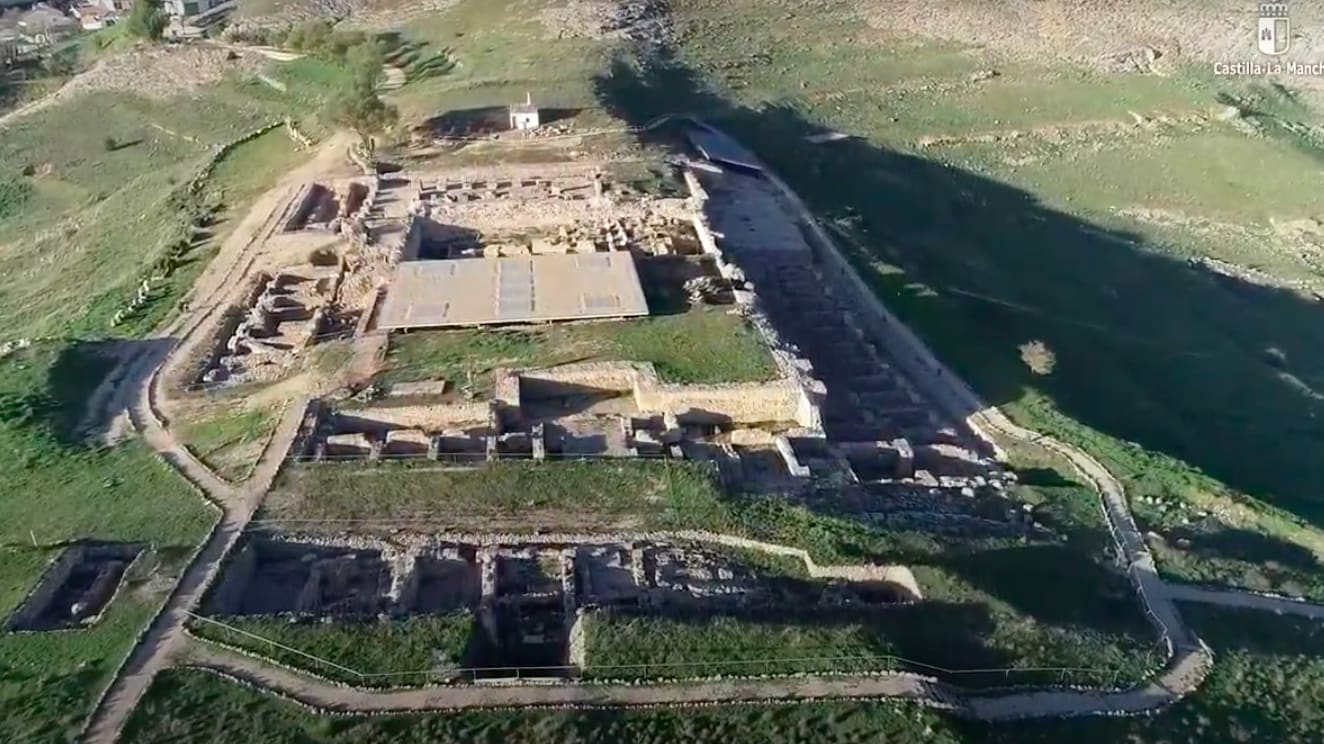
If you find yourself in the city of Cuenca (Castille- La Mancha) and have an extra day for sightseeing, you can’t miss Valeria!!! This Roman city is 32 minutes away from Cuenca and is another impressive travel back in time.
Valeria was founded by consul Valerio Flaco in the first century BCE. It was built strategically to connect with the other Roman city of Carthage (the one we talked about a bit earlier). Valeria was declared a “Bien de Interes Cultural” (Site of Cultural Interest) by the Spanish government in 1977.
What to see in Valeria?
- The Roman forum
- The Basilica
- The ninfeo
- The walls
- The tabarnae
- The Exedra
I think it’s important to point out that all these places have been carefully restored and studied. At first, they might look like a bunch of rocks, but you’ve got to use a bit of your imagination. The most crucial piece in Valeria is the Ninfeo. This was the complex dedicated to the cult of water, and it is believed to be the second biggest of the Roman Empire. And the Exedra was the site devoted to the cult of the Emperors. Take a look at the city in this video!

As you can see, if you come to Spain, you can also travel in time!!! These Roman cities carry the history of the Iberian peninsula, a territory that has seen civilizations come and go. The intermixing of cultures is what characterizes Spain today. The Romans gave us the base of our language and customs; after that, we experienced more diversity. Now you know one of the reasons we have 17 cultures in Spain.
I hope this information was helpful and if you visit any of these places, please reach out! Let us know, and share your experience with us.











